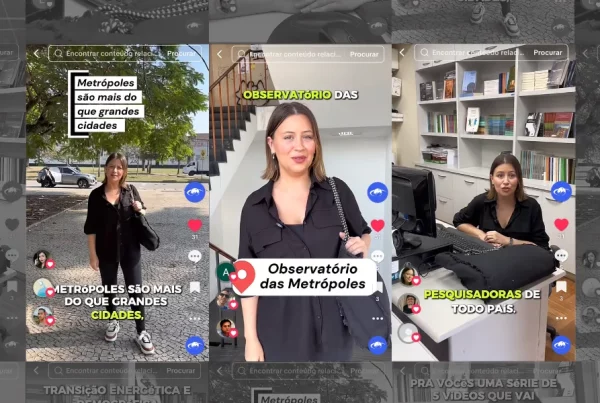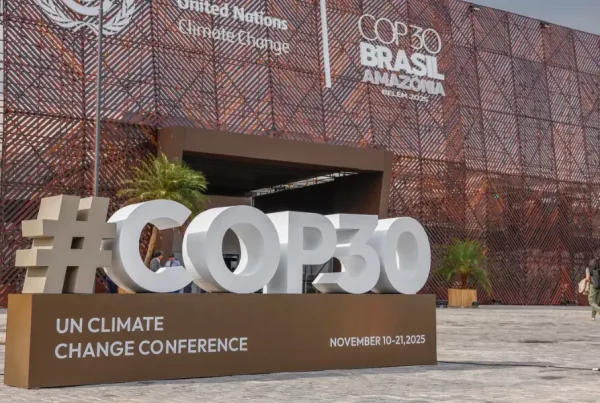The INCT Observatório das Metrópoles Network launches the Dossier What Is at Stake in these Games? 2016 Olympics and the Commodification of the City of Rio de Janeiro. Published in a bilingual version (Portuguese and English), is it geared towards the national and international scientific community, as well as Brazilian and foreign journalists and civil society. The document shows that the sporting mega-events have been transformed into a new model of business in the globalized era, which is characterized by the attraction of financial flows, the restructuration of circulation circuits and local accumulation. The dossier analyzes subjects such as the urban mobility, urban renovation projects (I.e. Porto Maravilha), public transparency and the role of the State, private-public partnerships, and the human right violations in the context of 2016 Olympic Games.

FOREWORD
From the moment Rio de Janeiro was announced as the host city of the Olympics, the official discourses of the political elite and mainstream media started stressing the great opportunity afforded to the city by the sporting mega-event. It would allow the city to benefit from investments capable of facing serious problems, such as urban mobility and the recovery of degraded areas for housing, trade and tourism, like the port district. Therefore, such discourses included the promise of the “Olympic legacy” for the entire population, stated clearly in the city’s Candidature File:
The Rio 2016 Games will be fundamental to anticipate the realization of long-term aspirations of Rio de Janeiro, enhancing the city’s social, physical and environmental fabric, a process that is already underway thanks to its actual bid for the 2016 Games .
However, on the eve of the Rio 2016 Games, the reality is quite different. In the case of mobility, the government has invested, for example, R$ 19 billion in 16 kilometers of metro lines to meet the needs of less than 1% of the city’s population – about 300 thousand people. The municipality of Rio de Janeiro alone has 6.4 million people. In turn, the Light Rail Transit (LRT) line, which connects the Santos Dumont Airport to the Novo Rio Bus Station, cost R$ 1.5 billion, R$ 600 million of which came from public coffers. Meanwhile, the highest population density in Rio is in the West (41%) and North (36.5%) Zones, precisely the regions with the largest mass transport bottleneck for access to the city center (where a large of the jobs are located).
The city government has argued in favor of investments in the Bus Rapid Transit (BRT) lanes as a transport solution for the popular classes. However, the facts and analyses have indicated that the new system presents frequent problems – accidents and overcrowding – and favors the construction of a new centrality in the city, located in Barra da Tijuca. The popular classes have been encouraged to seek work in Barra, providing cheap labor in a region that aspires to be a hub of business and entrepreneurship in Brazil. Meanwhile, the barriers to access other areas of Rio de Janeiro have increased thanks to a process of bus route rationalization.
To all appearances, the metropolitan area of Rio de Janeiro has been forgotten in the Olympic project. The Greater Rio railway lines, for example, serve approximately 750,000 passengers per day, totaling 270 km of tracks and 102 stations. Moreover, they are present in 12 municipalities with a population of 9 million. However, no effective investment has been allocated to recover its system. The few refurbished stations are all in the vicinity of Olympic facilities.
Regarding investments for the restoration of degraded areas, the Porto Maravilha project is the best symbol of this new cycle of commodification of Brazilian cities, characterized by the strategy of urban renovation. It is a strategy based on the progressive gentrification of certain areas of the city marked by social, political and economic centrality, and the simultaneous eviction of the popular classes previously residing in those sites.
This process has been evident in the context of the preparation for the Olympics, with direct and indirect participation of the municipal government. Whether by promoting gentrification or favoring the elimination of political and economic obstacles for such, the local government of Rio de Janeiro has enabled the realization of the Olympics mainly by empowering market mechanisms.
In short, the profound changes underway in the urban dynamics of the city of Rio de Janeiro involve, on the one hand, new commodification processes of the city and, on the other, new patterns of relationship between government and private sector, characterized by the subordination of the government to the logic of the market.
To analyze this process and support the debate on the “real legacy” of sporting mega-events for Brazil and Rio de Janeiro, the INCT Observatório das Metrópoles Network launches the Dossier What Is at Stake in these Games? 2016 Olympics and the Commodification of the City of Rio de Janeiro. Published in a bilingual version (Portuguese and English), is it geared towards the national and international scientific community, as well as Brazilian and foreign journalists and civil society.
In the first section, this Dossier analyzes the process of neoliberalization of Brazilian cities in the context of sporting mega-events, and the clash between so-called urban liberalism and the concept of the right to the city.
In the article The gentrification as a strategy of neoliberalization of Brazilian cities, Orlando Alves dos Santos Jr. shows that the institutional political coup underway in Brazil represents a new inflection in Brazilian urban policy, this time of a conservative nature. The author presents a historical analysis of Brazilian urban policies – from the initial model of segregating urbanism, to the anti-progressive administrations of Collor de Mello and FHC, based on the neo-liberal agenda, down to the progressive period starting in 2003 with the creation of the Ministry of Cities – to show that the conservative coalition craves power in order to enhance the market-city paradigm in Brazilian urban policy. The city is no longer treated as a whole, while the public sphere also ceases to be the expression of the collective interest.
In the article Right to the City Inc: the engine room of urban financialization, Thiago Hoshino and Júlia Franzoni show that financialization of space is a practice (or rather, a practical rationality) associated with neoliberalism as a “new reason in the world.” According to the authors, much of what was once the factory floor has become the floor of the cities, and now the actual spaces and their subjects have been transformed into the machinery to extract surplus value. Resulting from segregating urbanization, a set of legislative threats of a speculative nature is added to the city, with the purpose and trademark of attempting to transform the urban space into an increasingly profitable financial asset.
Also part of this section are two articles related to the theme “2016 Olympic Games and the commodification of Rio de Janeiro,” focusing on the works and projects of the Olympic Rio Project related to infrastructure – sports facilities, transport and urban renovation – and an analysis of the stakeholders involved in the process, financial resources (financial matrix), public transparency and urban governance.
In the article Investments and Public-Private Partnerships: the neoliberal urbanization of the Olympic City, Larissa Lacerda, Mariana Werneck, Orlando Alves dos Santos Jr. and Patrícia Novaes analyze the planned investments in preparing the Olympic Games. The authors stress that public participation exceeds private participation in the investments for the 2016 Olympics, contrary to what has been disclosed by the city government of Rio de Janeiro.
The study also shows how the investments are spatially distributed in the territory, pointing to a process of urban renewal focused on three purposes: enhancing the centrality of the South Zone; revitalizing the centrality of the port district, considered decayed; and creating a new centrality in Barra da Tijuca. According to the authors, all cases involve processes of elitization and gentrification, alongside the removal of lower classes. At the end, they discuss how this type of urban restructuring development is accompanied by the adoption and spread of a new pattern of neoliberal entrepreneurial governance founded on the establishment of Public-Private Partnerships (PPPs), which transfers to the private sector the management of public facilities and spaces.
In the article Urban Transport in the City of Rio de Janeiro: a reflection on the bus fleet rationalization, researchers Juciano Martins Rodrigues and Pedro Paulo Bastos analyze the municipal administration’s plan to reorganize the bus system, established in 2015. Focusing on the the South Zone of Rio de Janeiro, an area with a high level of income concentration, the plan called for the elimination of 28 lines and the shortening of 21 routes in the region. According to the authors, the fleet rationalization has negatively impacted the daily lives of users from the city’s outermost areas, further aggravating social inequalities and urban segregation.
The second section of the Dossier – Books, Theses and Dissertations – features research findings of the INCT Observatório das Metrópoles Network on the subject of sporting mega-events.
In the study Porto Maravilha: agents, power coalitions and neoliberalization, Mariana Werneck shows that the revitalization project of Rio de Janeiro’s harbor area is part of a global financialization process of the city that is determined, in the case of Porto Maravilha, by an original arrangement that combines public-private partnerships and capital market instruments. It is, therefore, a process that determines a new pattern of relationship between government and private sector, on the one hand inaugurating a new management system for the city, and, on the other hand, deepening Rio’s socio-spatial inequality
Next comes a review of the e-book Porto Maravilha: the imaginary of revitalization, by geographer Nelson Diniz. The study underlines that the Porto Maravilha project, conceived by the discourse of the “imaginary of revitalization” and based on models such as Baltimore Harbor (USA) and Port Vell (Barcelona), greatly resembles a classic model of urban renovation marked by with the demolition of buildings, confrontation with the local community, and use of public funds to generate profit for private investors.
In official discourses, the urban transformations of the “Olympic City” will generate positive impacts for its residents and for those residing in the metropolitan area. In this context, investments in mobility infrastructure were the most important, accounting for 55% of investments for both the 2014 World Cup and the 2016 Olympics. In 2016 Olympics and the Impact of the “Transport Revolution” on Socio-Spatial Justice, researcher Jean Legroux presents the findings of his thesis resulting from an academic collaboration between Université Lyon 2 and IPPUR/UFRJ, an innovative contribution that assesses the impact of transportation projects on socio-spatial justice in Rio de Janeiro from a multi-scale and multi-criteria perspective. The study shows that the impacts of the “transport revolution” brought about changes that do not break with the Brazilian model of road transport or with the logic of segregation of the neoliberal city.
Also linked to the theme of mobility is the review of the e-book Transition in Bus Transport Regulation in the City of Rio de Janeiro, by geographer Igor Pouchain Matela. The starting point of the book is the year 2010, when for the first time in history the municipal government of Rio de Janeiro held a public tender for the private concession of its entire bus transport system. Thus, Matela seeks to show that this initiative is part of the process of neoliberalization of Brazilian cities and does not represent a rupture, but rather a regulatory transition to a new cycle of accumulation in the sector.
The Dossier What Is at Stake in these Games? 2016 Olympics and the Commodification of the City of Rio de Janeiro also features an interview with American researcher Christopher Gaffney, who has been doing research in Brazil for the last 12 years, monitoring and measuring the social and urban impacts of sporting mega-events in Brazil and Rio de Janeiro. From 2009 to 2014, Gaffney ran the blog Hunting White Elephants, narrating the trials and hardships of a city squirming under the demands of spectacle. He has also collaborated with the INCT Observatório das Metrópoles Network, taking part in the project “Metropolização e Megaeventos: os impactos da Copa do Mundo 2014 e das Olimpíadas 2016” (Metropolization and Mega-events: the impacts of the 2014 World Cup and the 2016 Olympics).
In this interview, the researcher argues that world sporting mega-events, such as the FIFA World Cup and the Olympic Games, have become a business model in the globalized age responsible for attracting financial flows and restructuring circuits of circulation and local accumulation. He also affirms that the Rio 2016 Olympic Games represent yet another stage of this model composed of a coalition of interests between the political class, the local economic elite, and international capital flows. In short, a process with few winners and many losers.
Closing the Dossier, the section titled “Popular Resistance” features the Dossier of Mega-Events and Human Rights Violations in Rio de Janeiro, the most comprehensive document of the struggle of social movements, grassroots organizations, non-governmental organizations and civil society against human rights violations and the impact of projects related to the hosting of sporting mega-events in Rio de Janeiro.
Prominent among the resistance actions is the “Exclusion Map – Rio 2016”, revealing the true legacy of the Rio de Janeiro Olympics, compiling information on removed communities, occupied favelas, environmental crimes and work projects teeming with irregularities. The map indicates, for example, all the removal sites in the city since 2009, which resulted in the eviction of approximately 77,000 people from their homes.
The “Exclusion Map” also shows the environmental impact of the Games, denouncing the non-fulfillment of pollution clean-up goals. It also exposes the privatization process of sports facilities; the lack of transparency of great urban intervention projects, such as Porto Maravilha, in which the consortium’s companies are involved in accusations of Operação Lava Jato; and also work violations, with the persecution of traditional street vendors and the death of 11 people in construction sites for the Games since 2013.
Dossier What Is at Stake in these Games? 2016 Olympics and the Commodification of the City of Rio de Janeiro.
Publicado em Publicações | Última modificação em 04-08-2016 19:28:37

















